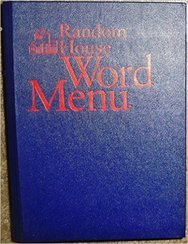 This monstrosity was published in 1992, the year I graduated from high school, and clocks in at a whopping 977 pages, measures 10 x 7 inches, and is mostly comprised of a font that looks likes Times New Roman at an eye-squinting 9 or 10 points. Nary a photograph or drawing can be found in this reference book that cares more about jamming in as much information as possible than it does about aesthetics. This clunker can be used to prop open doors or fend off home invaders, your choice. Or, as per its original intention, be used to refer to every obscure fact or hierarchy or vocabulary usage known to man, and then some. I adore this book. Want to ponder on the various styles of mustaches throughout the ages? Hankering to know how many breeds of chickens there are? Can’t remember the difference between igneous, metamorphic, or sedimentary rocks? Then refer to Mr. Glazier’s book and you’ll have an unlimited guide to the internal combustion engine, meteorology, and various cuts of meat. Can’t remember the name for a hinged window above a door? The Word Menu knows. Military ranks, property law, and support garments abound in Mr. Glazier’s book. The section on language usage fairly boggles the mind. For example, intent on reviewing some terms of endearment and respect? There’s a section that breaks down such terms into the following categories: Pet Names; Friendly and Familiar Address; Titles and Honorifics; Affectionate Reference, and Respectful or Admiring Reference. And that, my sweet poppets, is a wonderful example of the Word Menu’s very thorough, very prolific lists of well, lists. The only downside is that some of the information is dated. The sections on populations and space exploration are frozen in time, and the section on computers exist in a parallel universe where social media didn’t exist and the internet was still in its infancy. That being said, the bulk of information found between the covers of the Word Menu is a treasure trove for the historical writer. After all, the section on popular music that woefully ends with the 1980s never factors in to our books on 19th century dukes and the wallflowers who love them! The remaining drawback about this book is that it can only be used as that first stepping stone on the way to acquiring information. Terms only receive an one-line definition before moving on to the next snippet of knowledge. For instance, if your heart is set on discovering how many types of worms are listed in the section dedicated to such critters, you’ll be happy to know it’s 62, but you’ll have to look elsewhere if you’re dying to know what a tubifex worm looks like, or whether or not it lives in fresh or salt water. And hey, who isn't dying to know what a tubifex worm looks like? I know I am. The Word Menu certainly has its limitations, but overall it’s an irreplaceable tome in my library of reference books. Want to go over this marvelous book with a fine-tooth comb for yourself? It’s still available for sale on Amazon by clicking here.
1 Comment
|
Marti Ziegler
|



 RSS Feed
RSS Feed


